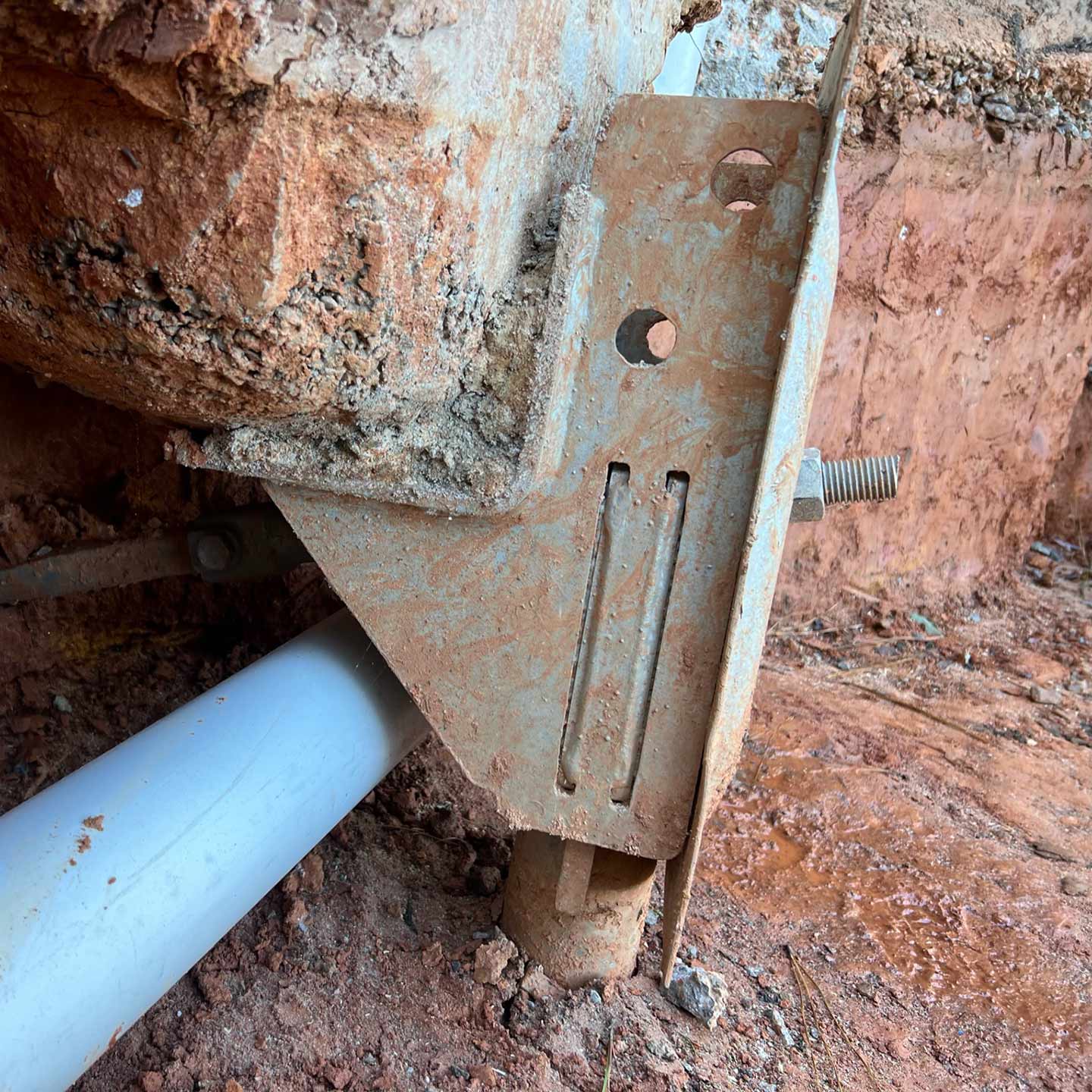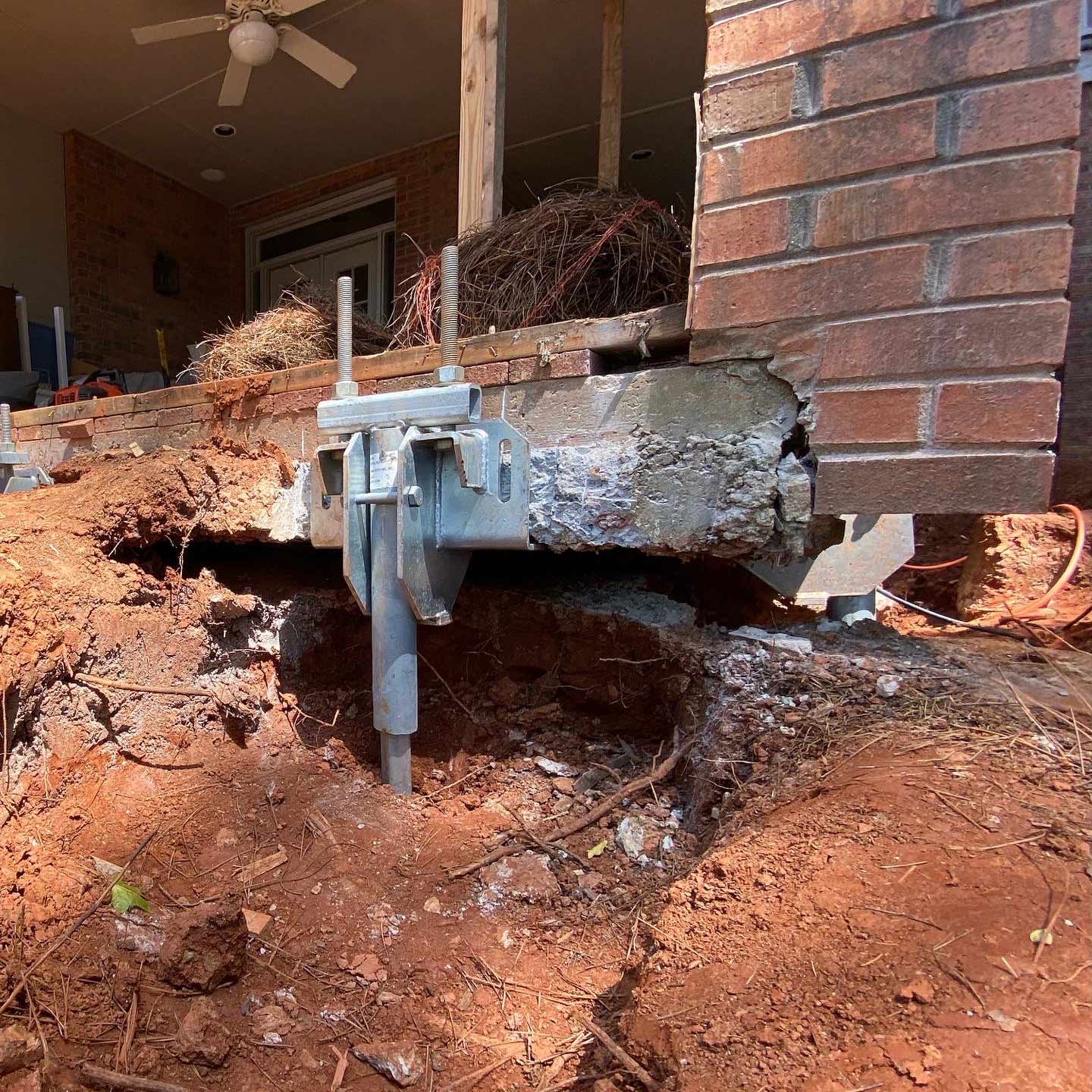Commercial & Residential
Structural Foundation Repair
Addressing Foundation Settlement
We are Subsidence and Structural Repair Specialists- Our purpose is to save our customers money by providing efficient and safe solutions to structural issues. Our applications increase safety and extend the lifespan of overlying assets, providing a cost-effective alternative to ongoing repairs or total replacement. We use a variety of cutting-edge applications to tailor each repair to the specific needs of the project, and the result is backed by a 30-year, industry’s best transferrable warranty.
Foundation settlement occurs when underlying soil instability leaves part of the foundation unsupported. Our repairs address the root causes of the issue, so you can be confident your home rests on solid ground.
Indicators of foundation settlement:
- Cracks in the brick, stucco or other exterior façade material
- Cracks in the sheetrock
- Sloping floors
- Doors and windows that don’t function properly
- Cracks in concrete slabs or foundation walls
- Gutters not draining properly
How we can help:
- Helical Piers: Using Helical Piers to address foundation settlement involves installing structural steel columns with weight-bearing capabilities around the perimeter of the compromised home. The piers are driven deep into the load- bearing strata of the soil, then bracketed to the foundation and used to exert an upward force on the structure. Helical piers can be used to lift structures that have settled to back to original position (Lift is not always guaranteed, but stabilization is.) When significant lift is required resulting in a cavity beneath the footing, Resin Injection may be used in conjunction with Helical Piers to fill the void and ensure full stabilization of the foundation.
- Tie-Backs: While Helical Piers are installed vertically and used to address settlement, Tie-Backs are horizontal anchors used to address lateral forces. Tie- Backs can provide a cost-effective solution to leaning retaining walls, basement walls experiencing pressure from behind, and much more.
- Resistance Piers: When access is not an option for the equipment necessary for helical piers, we offer resistance piers. Also know as push piers or friction piling, these piers rely on the weight of the structure to underpin the foundation. The drive tool is anchored directly to the structure and is used to push segmented steel columns to load-bearing depth. Similar to helical piers, brackets attached to the top of each resistance pier exert upward pressure on the foundation, ensuring your home remains stable.
- Concrete Lifting (& Stabilization): Used to treat unstable concrete in interior spaces, Resin Injection is minimally invasive and highly effective. Sloping floors, offset joints and cracking slabs are all potential indicators of instability beneath your interior concrete. Our repair process utilizes a unique expanding material injected beneath the slab through a grid pattern of dime-sized holes. The material solidifies and strengthens underlying soils to stabilize the slab and prevent any future movement.
- DeepLock Soil Stabilization: While Concrete Lifting treats the soil close to surface and immediately under a concrete slab, DeepLock Soil Stabilization addresses issues hidden deep beneath the surface of the soil. Expansive soil types, organic decay, improper backfill compaction during construction, and many other issues are easily remedied with our quick, hassle-free and cost-effective solution. The process works by driving small pipes down to problem areas. Soil stabilization resin is propelled through the pipes to these areas to add density and strength to the soil mass, creating columns of stability and allowing the soil to resist settlement from the structure above.
- Crawlspace Jacks: For many homes with a crawlspace, sagging or uneven floors will eventually become a reality. Isolated columns under the interior of home can settle over time, and wooden floor joists may bow and develop flexure with age. Crawlspace jacks are a cost-effective way to support these areas and ensure the interior of your home remains stable.




